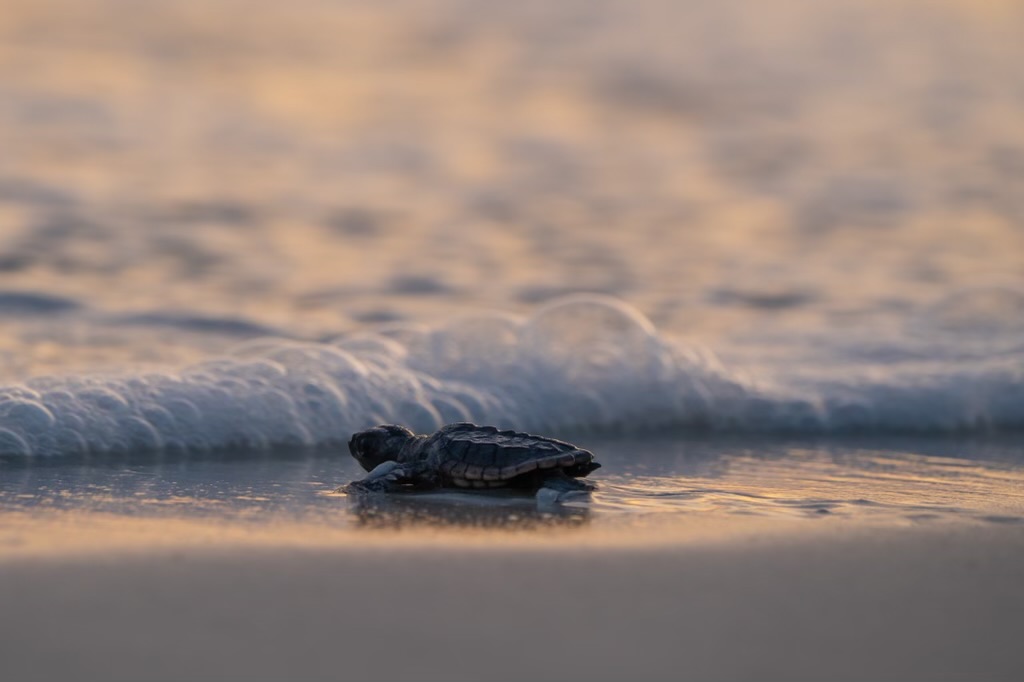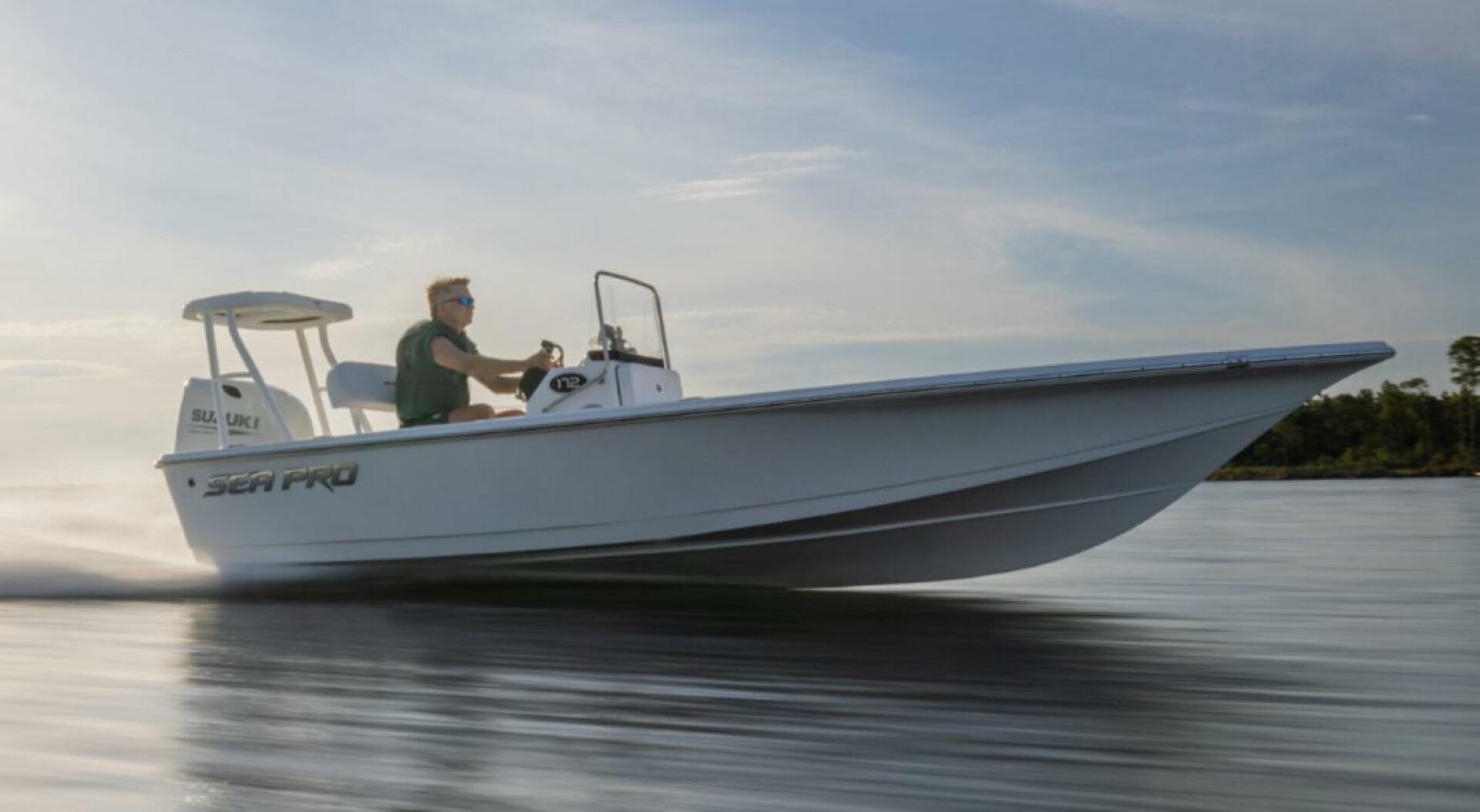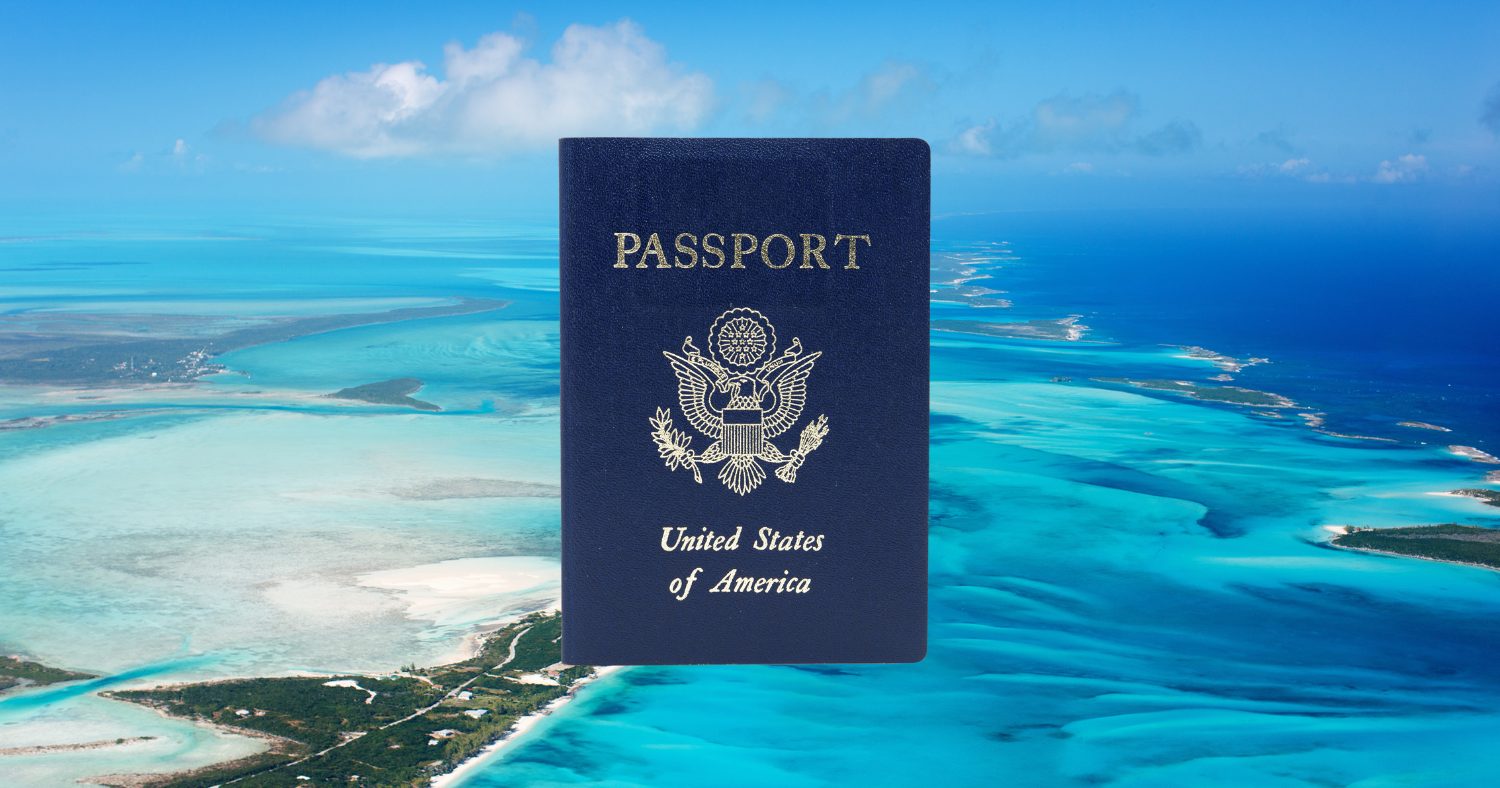Canoe Paddles: Choosing the Best Type for Your Adventure
Canoe paddles are an essential piece of gear for any canoe enthusiast. They come in a variety of designs, materials, and styles, each with the potential to impact your paddling experience. Paddles can be divided into two main categories: bent shaft and straight shaft, with specific use cases and benefits for each.
The material of the paddle greatly affects the weight, durability, and overall performance. Common materials include wood, aluminum, carbon fiber, and plastic. A lightweight paddle can significantly reduce fatigue on longer trips, while a sturdy and durable paddle is ideal for navigating rougher waters.
In addition to the type of paddle and material, factors such as length, blade shape, and grip also play a crucial role in the overall efficiency and comfort of your paddling experience. Finding the right paddle for your specific needs and preferences can enhance your time spent on the water, making your canoeing adventures more enjoyable and successful.
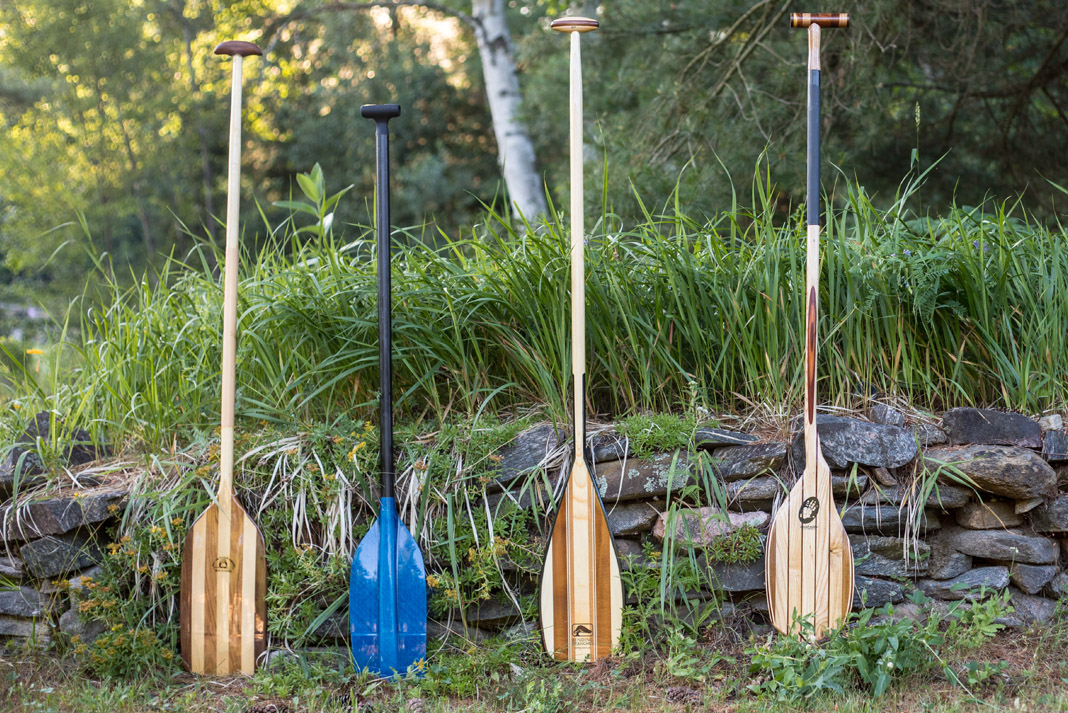
Canoe Paddle Fundamentals
Types of Canoe Paddles
There are various types of canoe paddles designed for different purposes and conditions. Some common types include:
- Recreational Paddles: Ideal for flatwater, slow-moving rivers, or simply enjoying a leisurely paddling experience.
- Whitewater Paddles: Built for strength, stability and increased control in faster, turbulent water conditions.
- Performance Paddles: Designed for speed and efficiency, often used in racing or fitness paddling, and made from lightweight materials like carbon fiber or Kevlar.
Single blade paddles are the most traditional type, where only one blade at the end of the shaft is used for paddling. They come in various shapes, sizes, and materials to suit each paddler's needs and styles.
Double-blade paddles, also known as kayak paddles, are mainly used for kayaking and not canoeing due to their two-bladed configuration. They offer easier maneuverability and increased paddling speed at the cost of less efficiency compared to single-blade paddles.
Straight Shaft vs Bent Shaft
Straight Shaft Paddles have a continuous, straight shaft from the grip to the blade, making them versatile for different paddling techniques and strokes. They are preferred for precise control in moving water and provide better reach for stroke correction. Straight shaft paddles are better suited for beginners and general-purpose canoeing.
Bent Shaft Paddles feature a curved or angled area between the grip and the blade. This angled design emphasizes efficiency over versatility, making the paddling motion smoother and using larger muscle groups, resulting in less fatigue over time. Bent shaft paddles are ideal for experienced paddlers and are often used in flatwater and racing situations. The trade-off is that these paddles may be less suited for maneuvering compared to straight shaft paddles.
In summary, the fundamentals of canoe paddles can be broken down into types and shaft configurations. While single blade paddles are the most common choice for canoeing, double blade paddles are mostly used in kayaking. Understanding the differences between straight and bent shaft paddles will help paddlers choose the best paddle for their particular needs and paddling environments.
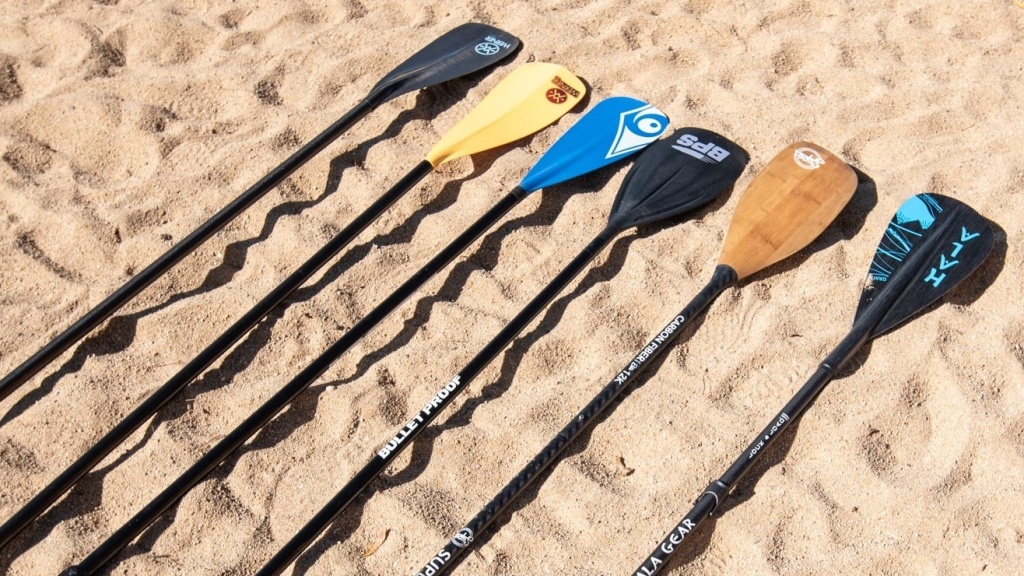
Materials and Construction
Wooden Canoe Paddles
Wooden canoe paddles are often made from a variety of hardwoods, including maple, cherry, ash, red alder, and basswood. These durable hardwoods provide strength and flexibility needed for paddling. Some paddles also feature roasted basswood, which adds to the overall aesthetics of the paddle. The wood types can be combined in laminates for added strength and durability.
Closed-grain woods, like maple and cherry, are chosen for their durability and ability to withstand water exposure. To enhance their resilience, these paddles should be coated with a varnish or oil finish. Additionally, many wooden paddles come with Rockgard® protection, a wear-resistant shield that further increases paddle longevity.
Fiberglass
Fiberglass canoe paddles are made from fiberglass cloth and mixed resins, resulting in a strong, lightweight, and stiff paddle. One notable advantage of fiberglass paddles over wooden ones is that they require less maintenance. Furthermore, fiberglass paddles often feature a fiberglass blade wrap, which adds extra strength and protection to the blade.
Fiberglass paddles are a popular choice among recreational paddlers due to their balance of performance, durability, and cost.
Carbon Fiber
Carbon fiber canoe paddles are made from a composite material consisting of carbon fiber and resins. They are known for their lightweight and strong properties, making them a popular choice among performance-oriented paddlers. Carbon fiber paddles typically require less maintenance than wooden paddles and can be more expensive.
Plastic
Plastic canoe paddles can be made from a variety of synthetic materials, including polyethylene and polypropylene. These paddles are affordable and low-maintenance options for those new to canoeing or those on a budget. However, plastic paddles may not offer the same performance and durability as wooden, fiberglass, or carbon fiber paddles.
In conclusion, canoe paddles are available in a range of materials, each with its advantages and drawbacks. When selecting a paddle, consider your budget, performance needs, and personal preferences to ensure you choose the right material for your canoeing adventures.
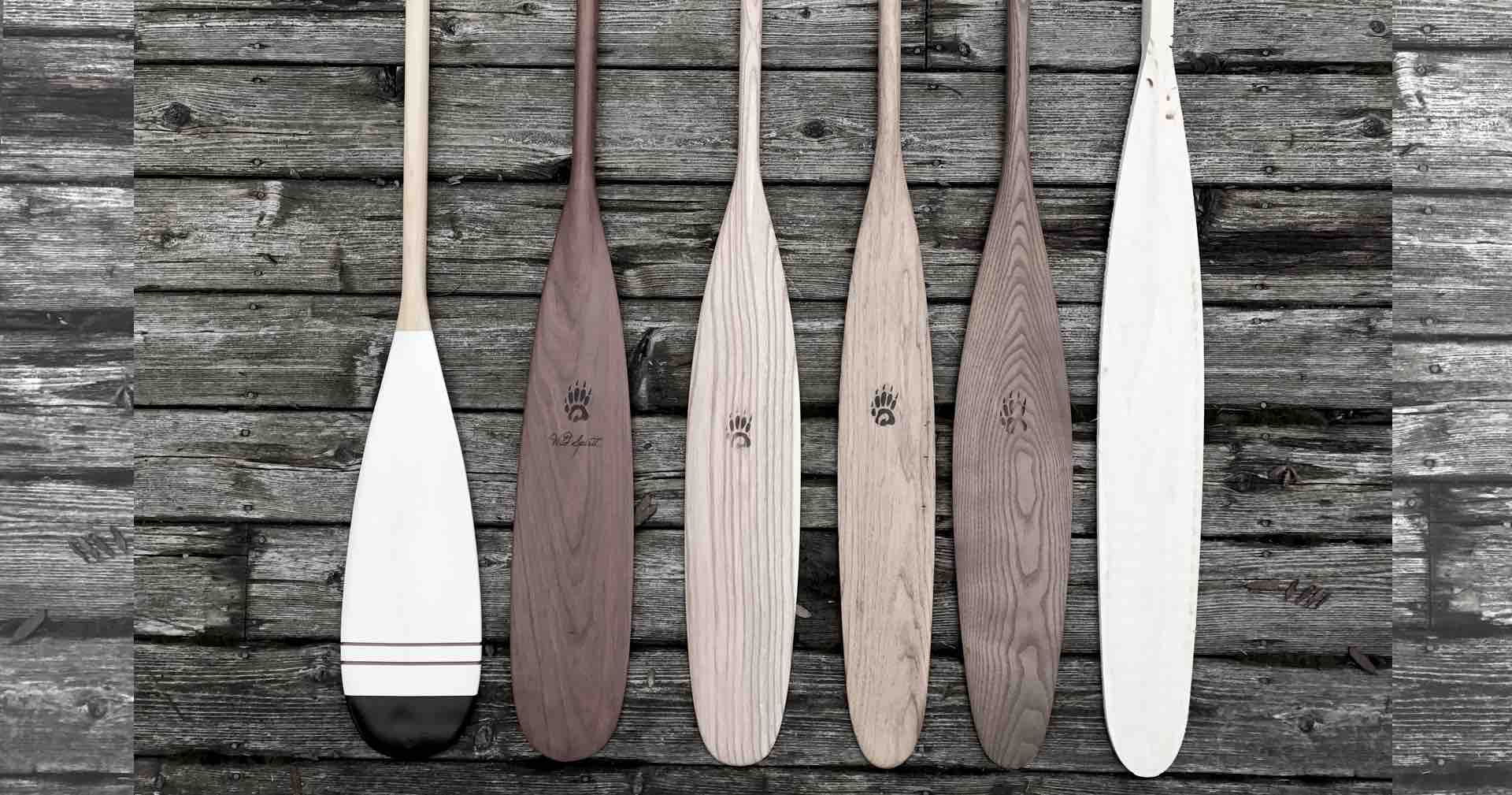
Choosing the Right Paddle
When selecting a canoe paddle, it's essential to consider various factors such as paddle length and size, blade shape, and style. This section will guide you through these critical aspects to help you find the ideal paddle for your canoeing needs.
Paddle Length and Size
Paddle length is a crucial factor when choosing a canoe paddle. To determine the appropriate length, try paddling your canoe on the water with a broomstick, as recommended by Paddling Magazine. The section of the broomstick that stays dry during paddling will indicate the ideal shaft length for your specific canoe.
When considering paddle size, weight plays a significant role in your comfort and performance. For trips that are six hours or less, economical options with added features are less necessary. However, on more extended outings, consider investing in a paddle that is lightweight and offers durability and performance, following the recommendations of Bending Branches.
Blade Shape and Style
The shape and style of the paddle blade can influence your paddling efficiency and comfort. Some common blade shapes are:
- Ottertail: This style has a narrow and elongated blade that enables smooth strokes, making it suitable for solo or tandem canoeing.
- Beavertail: The beavertail shape features a wide, rounded blade that's perfect for shallow water or heavy loads, offering more power per stroke.
- Voyageur: A narrower and tapered blade that delivers efficient strokes, making it ideal for long-distance paddling or moving water.
Ultimately, the right paddle will depend on your personal preferences and intended usage. As Sanborn Canoe suggests, the ideal paddle for you is the one that feels right when you use it. Explore different blade styles and shapes to find the perfect fit for your canoeing needs.
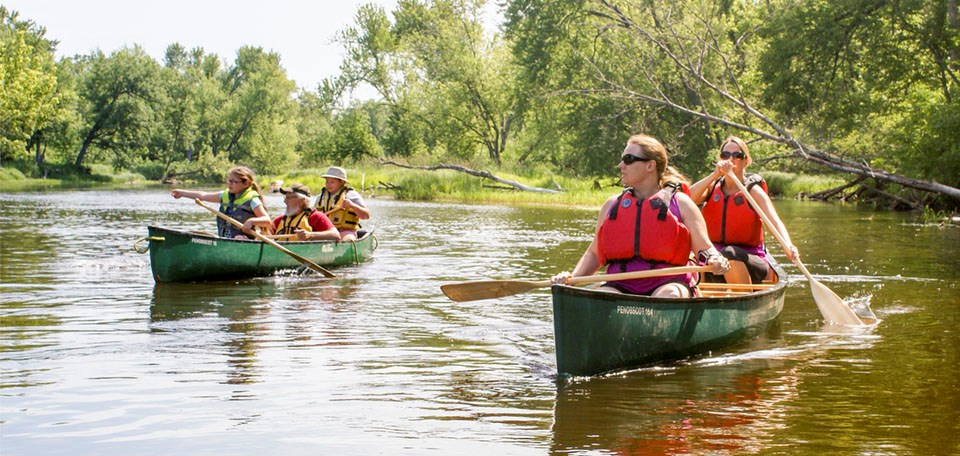
Paddle Features and Comfort
Grip Options
When choosing a canoe paddle, one of the key features to consider is the grip. There are two common grip shapes: the palm grip and the T-grip.
Palm Grips can be further divided into the classic palm grip and the freestyle palm grip. The classic palm grip, shaped like a teardrop, fits nicely into the paddler's hand and is an excellent choice for long flatwater trips and recreational paddling. It offers great comfort and control for extended periods of use. The freestyle palm grip is quite similar in shape but provides a better feel of the paddle, making it ideal for advanced paddlers who perform freestyle or technical maneuvers on the water.
T-grips, on the other hand, offer increased force and power, making them popular among whitewater and expeditionary paddlers who require more control in challenging conditions. T-grips allow paddlers to apply more force to their strokes, thereby enabling them to navigate rough waters with greater ease.
Blade Protection
It's essential to protect your paddle's blade from damage, especially if you paddle in rocky or shallow waters. One widely used solution for blade protection is Rockgard® edge protection. This protective material extends from the blade tip up the shaft (usually about 6 inches) and shields the blade's vulnerable edge from impacts with rocks, logs, and other underwater hazards. Rockgard® edge protection helps prolong the life of your canoe paddle and ensures that you can continue to paddle with confidence, even in challenging conditions.
In summary, selecting the right grip and considering blade protection are crucial aspects of finding the perfect canoe paddle. The palm grip offers comfort and control for flatwater and recreational paddling, whereas the T-grip provides the force and power needed for whitewater and expeditionary paddling. Investing in a paddle with Rockgard® edge protection can help you avoid damage and extend the life of your paddle.
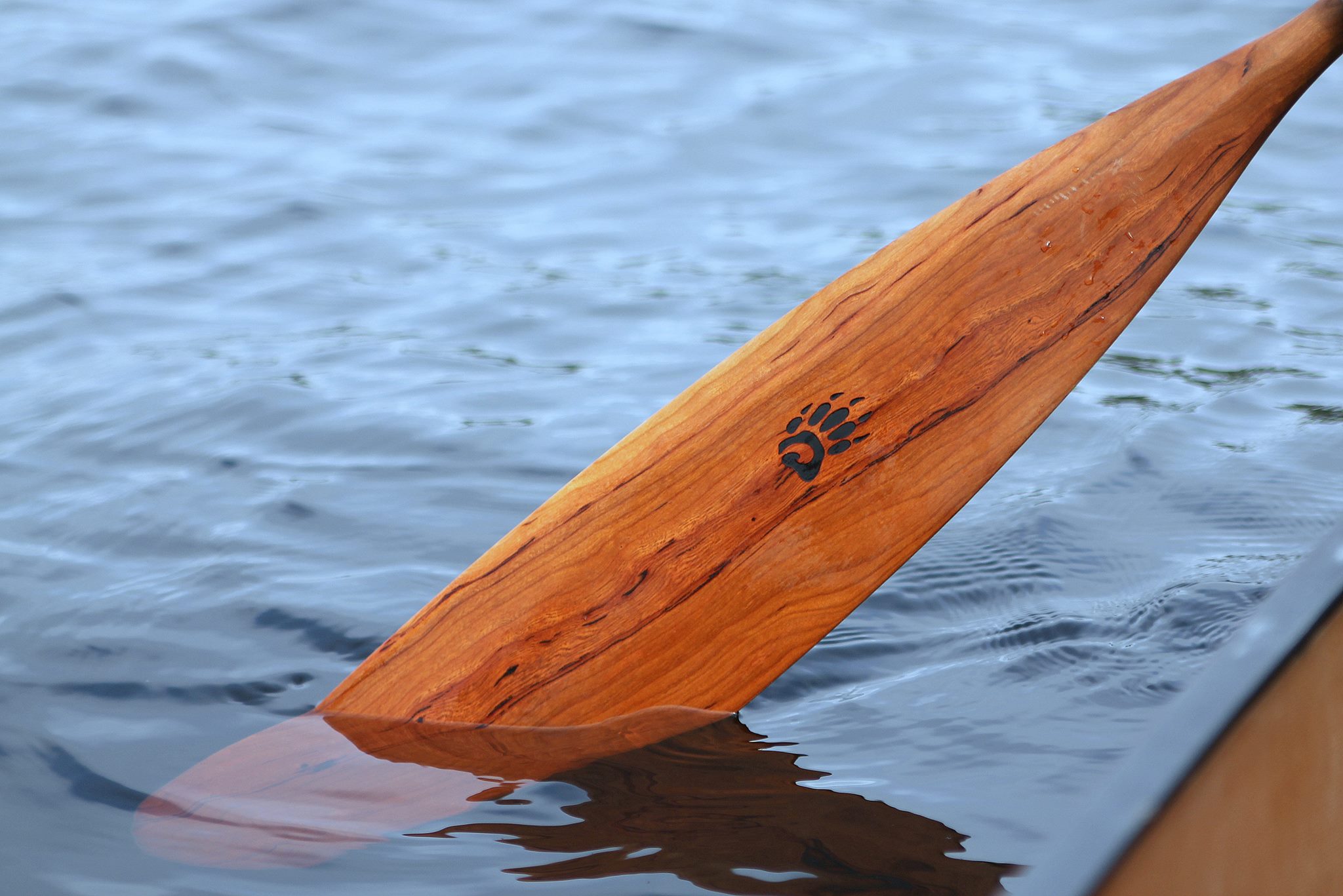
Canoe Paddles for Different Purposes
When choosing a canoe paddle, it's important to consider the type of paddling you plan to do. In this section, we will discuss different paddle types suited for various purposes, such as whitewater and river paddling, touring and wilderness tripping, and racing and solo canoeing.
Whitewater and River Paddling
For whitewater and river paddling, paddles designed specifically for these conditions are recommended. These paddles typically have a more durable construction and a shorter, wider blade to provide better control and maneuverability in turbulent waters. A popular type of paddle for this purpose is the bent shaft paddle, which features an angled blade that allows for a more efficient stroke in fast-moving water. Moreover, some whitewater paddles may have reinforced materials, such as carbon fiber or fiberglass, to increase durability and withstand the rough conditions found in rivers and whitewater.
Touring and Wilderness Tripping
For touring and wilderness tripping, a versatile paddle with a longer and narrower blade is ideal. This type of paddle provides a more efficient stroke for extended periods of paddling on flatwater lakes and calmer rivers. The longer blade also offers greater reach for a solo canoeist, which can be helpful in lake paddling or when maneuvering around obstacles. Ottertail and beavertail blade shapes are common choices for these activities, as they are designed for smooth and sustained strokes on flatwater. Material choices for touring and wilderness tripping paddles can range from lightweight wood to more durable and lightweight options like carbon fiber or fiberglass.
Racing and Solo Canoeing
Racing and solo canoeing require paddles with a more specialized design, focusing on speed and efficiency. Racing canoe paddles often have a bent shaft to improve stroke efficiency by reducing the time the blade spends out of the water. Additionally, these paddles are typically lightweight, constructed from materials such as carbon fiber or other composites, to reduce fatigue during long races.
In contrast, solo canoeing paddles are designed to provide control and maneuverability, often featuring a longer blade and shorter shaft to accommodate the solo paddler's positioning in the canoe. Some solo paddlers may prefer paddles with a symmetrical blade, offering versatility for various paddling techniques and conditions.
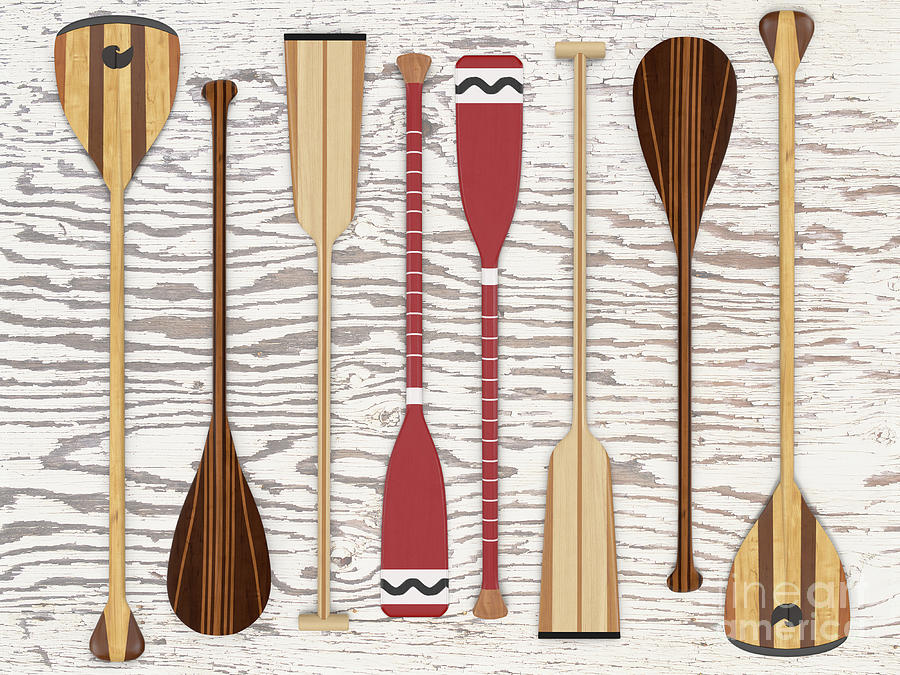
Popular Canoe Paddle Brands
Bending Branches
Bending Branches is one of the top brands for canoe paddles in the market. They offer a wide variety of paddles with different designs and materials to cater to the needs of every canoe enthusiast. One of their most popular paddles is the BB Special Canoe Paddle, which provides an excellent combination of durability and performance. Another highly regarded paddle from Bending Branches is the Arrow Canoe Paddle. This paddle features a composite shaft and a comfortable grip, ensuring great efficiency while paddling.
Sawyer Paddles
Sawyer Paddles is another renowned brand in the canoe paddles industry. They focus on creating high-quality, performance-driven paddles for paddlers of all skill levels. The Expedition Plus is one of their flagship products, designed specifically for longer trips and challenging waters. This paddle is highly durable and features a reinforced blade that allows for a powerful stroke. Additionally, Sawyer Paddles also offers the Java ST Canoe Paddle, handcrafted with a beautiful wooden finish and providing excellent paddle performance.
Other Renowned Brands
There are many other notable brands in the canoe paddle market that deserve recognition for producing top-quality paddles. Some of these brands are:
- Fishell Paddles: Known for their Ray Special paddle, which is versatile and great for canoe tripping and lake paddling.
- Grey Owl Paddles: Offers the popular Northern Light paddle, which is an excellent all-around paddle ideal for wilderness tripping at a fraction of the cost of other carbon paddles.
- Caviness Marine: Their Twin Stripe Canoe Paddle is an excellent choice for longer trips and adventures, providing reliability and durability in various paddling conditions.
For those looking for unique paddles tailored to their specific needs, many brands, including Sawyer Paddles and Bending Branches, offer custom paddles. Custom paddles are an excellent option for dedicated paddlers who want a perfect fit, ensuring optimal comfort and efficiency during their adventures.
Buying and Storing Canoe Paddles
Where to Buy Canoe Paddles
Purchasing the right canoe paddle is essential for an enjoyable paddling experience. It is crucial to gather information and read reviews about different brands and models to make an informed selection. Canoe paddles are available for purchase at a variety of locations, such as:
- Outdoor sports stores and big-box retailers
- Online retailers and specialty canoe shops
- Second-hand outlets and local classifieds
Remember to consider factors like paddle weight, blade/shaft material, length, and comfort when making your selection. When in doubt, consult with an expert at a physical store for guidance.
Proper Storage and Care
To extend the life of your canoe paddle and maintain its performance, proper storage and care are necessary. Here are some tips to help you store and care for your paddle:
- Keep paddles off the ground and away from direct sunlight and moisture. This will help avoid exposure to the elements, which can cause damage 1.
- Use a designated space indoors, such as a garage or shed, for paddle storage. This will keep them out of the way and protect them from potential hazards 2.
- Regularly clean your paddles with water and a mild detergent to remove dirt and grime. Avoid using harsh chemicals that could damage the paddle's materials 3.
- Inspect your paddles periodically for any signs of wear, cracks, or damage. This will help you identify any issues early and address them before they become more severe 4.
- In colder climates, protect your paddles from freezing temperatures by storing them indoors during the winter 5.
By following these purchasing and storage guidelines, you can ensure a better paddling experience and enjoy using your canoe paddle for years to come.
Footnotes
- Paddle Camp - Canoe Storage ↩
- Bending Branches - Proper Paddle Storage During the Winter ↩
- Paddling Magazine - How To Choose The Right Canoe Paddle ↩
- REI Co-op - Canoe Paddles: How to Choose ↩
- Paddling.com - Best Canoe Paddles of 2023 ↩
Charlie is Editor-in-Chief of Sea Magazine
